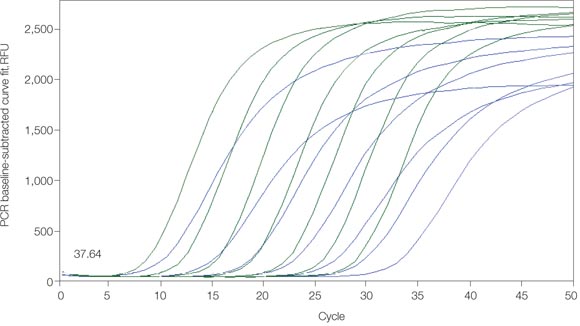Optimize Reactions in a Single Experiment
Bio-Rad real-time systems offer a thermal gradient feature, which allows you to optimize assays in a single experiment by using a range of temperatures simultaneously. At any step in a protocol, a temperature gradient of up to 25°C may be programmed across the reaction block.
- Gradient control provides exceptional uniformity and reproducibility within each zone
- Easy programming with onscreen presentation of gradient temperatures
- Precision ramping
- Available for both conventional and quantitative PCR instrumentation
- Each temperature within the thermal gradient is listed in validation reports

Thermal gradient. Optimizing incubation temperatures for real-time PCR assays is critical, particularly for multiplex assays, but it is not always easy to do. After the melting temperature (Tm) of a primer is calculated, the annealing temperature must be determined empirically for optimal results. This often involves repeating a reaction at many different temperatures. Similar time-consuming tests may be required to optimize the denaturation temperature. The thermal gradient feature facilitates identification of the most favorable temperatures for optimal assay performance.

Thermal gradient experiment for optimizing annealing temperature. A 10-fold dilution series (108–102 copies) of plasmid containing GAPDH template was amplified using a thermal gradient in the presence of SYBR Green I dye. The amplification reaction was monitored and analyzed with an iQ5 real-time PCR detection system. Eight identical reactions were prepared for each template concentration, one for each of the eight PCR annealing temperatures, ranging from 55 to 70°C. An optimal primer annealing temperature of 58°C (shown in the green traces), which resulted in the earliest CT value, was identified in this gradient assay. The blue traces show the results for 64.5°C as a comparison.